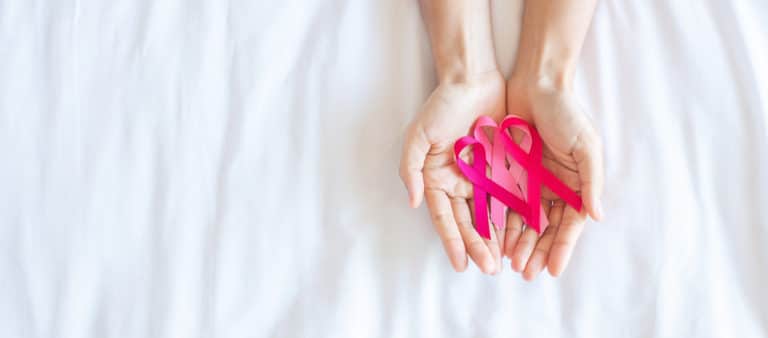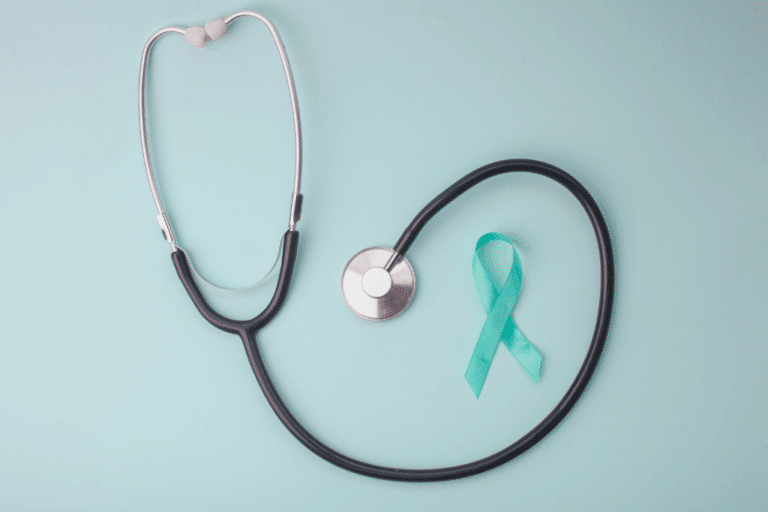Breast cancer is scary business and it seems like younger women are being diagnosed more than ever before.
Unfortunately, much of what increases your risk for breast cancer is completely out of your bucket of control. That’s the bad news. The good news is that there are things you can do to minimize the chances that cancer won’t be a part of your life.
Age is the single most important risk factor for breast cancer. The chances of developing the disease increase with age. Your risk is also greater if an immediate family member (mother, sister, or daughter) has had breast cancer, particularly if it was at an early age. Women who have had a breast biopsy (removal of breast tissue) that shows certain types of benign disease, like atypical hyperplasia, are also more likely to get breast cancer.
Other breast cancer risk factors include:
- Having cancer in one breast (may recur or develop in other).
- Having dense breasts (you should be told this by your radiologist).
- Having a history of ovarian, uterine, or colon cancer.
- Having a genetic abnormality in breast cancer genes BRCA1 or BRCA2.
- Late menopause (after age 55).
- Starting periods early in life (before age 12).
- Having your first child after age 30.
- Never having children.
- Taking hormone replacement therapy (HRT) using a synthetic progestin (not PROGESTERONE).
How to Manage What’s in Your Control
For the majority of these risk factors, there’s not a lot you can do. If age is the biggest risk, I’ll take my chances because the alternative (not getting older) isn’t attractive to me! Similarly, you can’t do much about dense breast tissue, the age at which you have children, or the fact that you may have started your period before you were 12 or continued to have periods past age 55. 
BUT, lifestyle does play a role in risk. Let’s take a look at what you CAN control.
Know How Your Body Metabolizes Estrogen
Your body makes three kinds of estrogen…which are then broken down in the liver into 3 different metabolites. One of these metabolites is associated with an increased risk for DNA damage (and thus, breast cancer). The DUTCH test shows the breakdown of these metabolites and allows your provider to craft a plan to push the estrogen into a safer pathway. I offer this test in my practice and can help you with getting your hormones into a better, safer balance. Here’s a video I made to further explain the DUTCH test.
Lose the Booze
Consumption of alcohol is clearly linked to an increased risk of developing breast cancer. The risk increases with the amount of alcohol consumed. Compared with non-drinkers, women who consume 1 alcoholic drink a day have a very small increase in risk. Those who have 2 to 5 drinks daily have about 1½ times the risk of women who don’t drink alcohol. Excessive alcohol consumption is also known to increase the risk of developing several other cancers. The American Cancer Society recommends that women have no more than 1 alcoholic drink a day.
Manage Your Weight
Being overweight after menopause increases breast cancer risk. Before menopause, your ovaries produce most of your estrogen, and fat tissue produces a small amount of estrogen. After menopause (when the ovaries stop making estrogen), most of a woman’s estrogen comes from fat tissue.
Having more fat tissue after menopause can increase your chance of getting breast cancer because estrogen levels stay high over a longer period of time. After menopause, there is little to no progesterone to counter the estrogen, which raises the risk. Also, women who are overweight tend to have higher blood insulin levels. Higher insulin levels have also been linked to some cancers, including breast cancer.
The connection between weight and breast cancer risk is complex. The risk appears to be increased for women who gained weight as an adult but may not be increased among those who have been overweight since childhood. Also, excess fat in the waist area may affect risk more than the same amount of fat in the hips and thighs. Researchers believe that fat cells in various parts of the body have subtle differences that may explain this.
Hormone imbalances can make losing weight difficult during perimenopause and menopause. Getting your hormones to play nicely with each other can make your weight loss efforts more effective (and keep estrogen dominance under control). You can read more about that here.
Ramp Up Your Activity Level
Evidence is growing that physical activity reduces breast cancer risk. The biggest question is how much exercise is needed. In one study from the Women’s Health Initiative, as little as 1¼ to 2½ hours per week of brisk walking reduced a woman’s risk by 18%. Walking 10 hours a week reduced the risk a little more.
Current recommendations suggest that adults get at least 150 minutes of moderate-intensity or 75 minutes of vigorous-intensity activity each week (or a combination of these), preferably spread throughout the week.
Clean Out Your Cosmetics
Limiting exposure to toxins that act like estrogen is another way to minimize risk. Our cosmetics and cleaning products are FULL of things that are endocrine disruptors. Think about all the things we slather on our skin. Do you REALLY know what’s in there? Your skin is like a giant mouth….so if you wouldn’t eat something, don’t put it on your skin. You can find out more about toxins in products at www.ewg.org.
Having risk factors for breast cancer doesn’t mean you’ll develop the disease, but it should create an awareness that you need to modify lifestyle factors you can control. Let the things you can’t control go and live your life. But while you’re living that life, take good care of yourself. The formula for good self-care is really very simple. Eat well; move your body, sleep, avoid things you know can be toxic (including people).
AND Get Your Mammograms!
There’s controversy about when to do that, but my personal opinion is that you should start at age 40. Some experts recommend starting at age 50, but I’m very biased toward 40. My sister developed breast cancer at age 40. If she’d followed the recommendations to wait until age 50, she might not be here. Talk to your healthcare provider about your risk and when to start screening.
Dr. Anna Garrett is a menopause expert and Doctor of Pharmacy. She helps women who are struggling with symptoms of perimenopause and menopause find natural hormone balancing solutions so they can rock their mojo through midlife and beyond. Dr. Anna is the author of Perimenopause: The Savvy Sister’s Guide to Hormone Harmony. Order your copy at www.perimenopausebook.com.
Dr. Anna is available for 1-1 consultation. Find out more at www.drannagarrett.com/lets-talk




